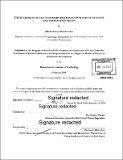| dc.contributor.advisor | Andrea Chegut. | en_US |
| dc.contributor.author | Bando Hano, Alfredo Keitaro | en_US |
| dc.contributor.other | Massachusetts Institute of Technology. Center for Real Estate. Program in Real Estate Development. | en_US |
| dc.date.accessioned | 2018-08-08T19:48:21Z | |
| dc.date.available | 2018-08-08T19:48:21Z | |
| dc.date.copyright | 2018 | en_US |
| dc.date.issued | 2018 | en_US |
| dc.identifier.uri | http://hdl.handle.net/1721.1/117306 | |
| dc.description | Thesis: S.M. in Real Estate Development, Massachusetts Institute of Technology, Program in Real Estate Development in conjunction with the Center for Real Estate, 2018. | en_US |
| dc.description | Cataloged from PDF version of thesis. | en_US |
| dc.description | Includes bibliographical references (pages 58-61). | en_US |
| dc.description.abstract | Smart buildings have grown from an increase in digital technologies that can sense, recognize and verify the experiences of the building and its inhabitants. Nascent literature has identified what it means to be considered smart. Buildings must respond to all three components of systems, performance, and service and has to have the following components: a) Smartness and technology awareness, b) economic and cost efficiency, c) personal and social sensitivity and d) environmental responsiveness. Yet, it is unclear whether these systems have any value to the users or its owners. This thesis studies the economic impact of Smart, Connected and Green buildings upon rents and transaction prices. Using numerous data sources, we identify buildings that offer at least one so-called "smart" amenity and link them with the building's achieved rent and transactions prices as well as to other so-called "innovation" amenities, like greenness and or fiber-lit connectivity. Results documented in this study suggest that buildings that offer a more integral solution (i.e. buildings that are Smart, Connected and Green) have a premium in both rents and transaction prices over similar office products. While products that offer a more disintegrated solution have a smaller premium or even no incremental value premium, with the exception of green only buildings that offers a premium by themselves. This study contributes to the vast literature on real estate innovation but explores particularly the recent commercial office products that are Smart Buildings. | en_US |
| dc.description.statementofresponsibility | by Alfredo Keitaro Bando Hano. | en_US |
| dc.format.extent | 68 pages | en_US |
| dc.language.iso | eng | en_US |
| dc.publisher | Massachusetts Institute of Technology | en_US |
| dc.rights | MIT theses are protected by copyright. They may be viewed, downloaded, or printed from this source but further reproduction or distribution in any format is prohibited without written permission. | en_US |
| dc.rights.uri | http://dspace.mit.edu/handle/1721.1/7582 | en_US |
| dc.subject | Center for Real Estate. Program in Real Estate Development. | en_US |
| dc.title | The incremental value of smart buildings upon effective rents and transaction prices | en_US |
| dc.type | Thesis | en_US |
| dc.description.degree | S.M. in Real Estate Development | en_US |
| dc.contributor.department | Massachusetts Institute of Technology. Center for Real Estate. Program in Real Estate Development. | en_US |
| dc.contributor.department | Massachusetts Institute of Technology. Center for Real Estate | |
| dc.identifier.oclc | 1045068873 | en_US |
